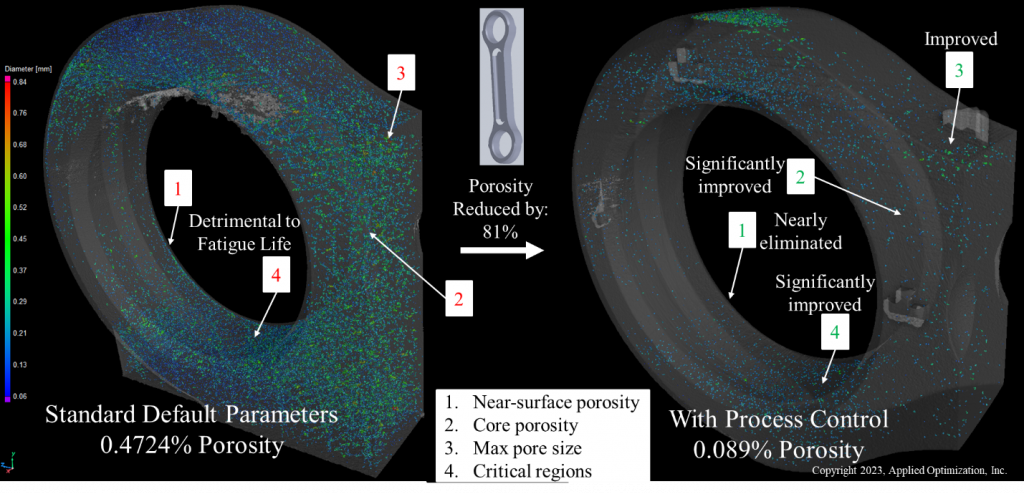Applied Optimization, Inc. (AO) is the developer of AMP² (Additive Manufacturing Parameter Predictor), GFP² (Gas Flow Parameter Predictor) software, and OSI (Open Sensor Interface) for in-situ high-resolution, simultaneous sensing in the visible (VIS) and mid-wave infrared (MWIR) wavebands anywhere on the build platform for the Laser Power Bed Fusion (LPBF) Additive Manufacturing (AM) process.
AMP²
AMP² is used for model-based engineering of LPBF process parameters for complex parts. AMP² uses automated algorithms that make it simple to learn and use the software to produce higher quality parts. Using AMP², we have demonstrated the ability to eliminate surface defects for complex parts, and minimize interior defects. Eliminating surface defects is important because these defects cannot be healed by the Hot Isostatic Pressing (HIP) process. Such elimination of surface defects is of particular interest for high-stress regions of structure-critical parts. An advanced degree in engineering is not required to effectivey use AMP²; a two-year associate degree is sufficient.

AO has won multiple awards in open competitions for results obtained using the AMP² software. Some of these competitions were open to all organizations, small and large, universities, and research laboratories, both domestic and international.
GFP²
GFP² is used for model-based engineering of gas flow parameters and the determining the optimal build layout and part order to mitigate spatter-induced defects. We have used GFP2 to model gas flow in commercial LPBF systems, and determine the distribution of gas flow velocity across the build plane. These predictions help fine-tune the inlet-outlet boundary conditions to enhance the uniformity of gas flow. Combining the results of metal fusion by AMP² and gas flow distribution by GFP², we can predict spatter formation and design at build layout to mitigate spatter-induced defects across the build platform.
OSI

The OSI optics hardware is used for high resolution in-situ sensing in the VIS and MWIR wavebands anywhere on a LPBF build platform. The OSI provides a 19 mm² dynamic (Eulerian) Field-of-View (FOV) that maintains a laser spot at its center while scanning layers. This dynamic FOV enables a track-by-track collection of VIS and MWIR data for the entire build, which is useful to validate the process parameters and process consistency.
We have used the OSI to demonstrate layer-by-layer process control of LPBF to attain > 80% reduction in defects as compared to the default parameters given by the original equipment manufacturer.
We are committed to advancing and developing new processes to further the field of AM. AO has been a member of America Makes since its beginning in 2012. Since 2020, AO has actively contributed to the AM Genome Swimlane and the Roadmap Advisory Group (RMAG) for the America Makes Technology Roadmap. Dr. Anil Chaudhary is the liaison for the AM Genome working group. He facilitates the coordination between America Makes members to refresh the Technology Roadmap requirements for (i) physics-based modeling and simulation, (ii) benchmark validation use cases, and (iii) model-assisted property prediction.
Categories
- No categories

 Contact Us: (937) 431-5100
Contact Us: (937) 431-5100



